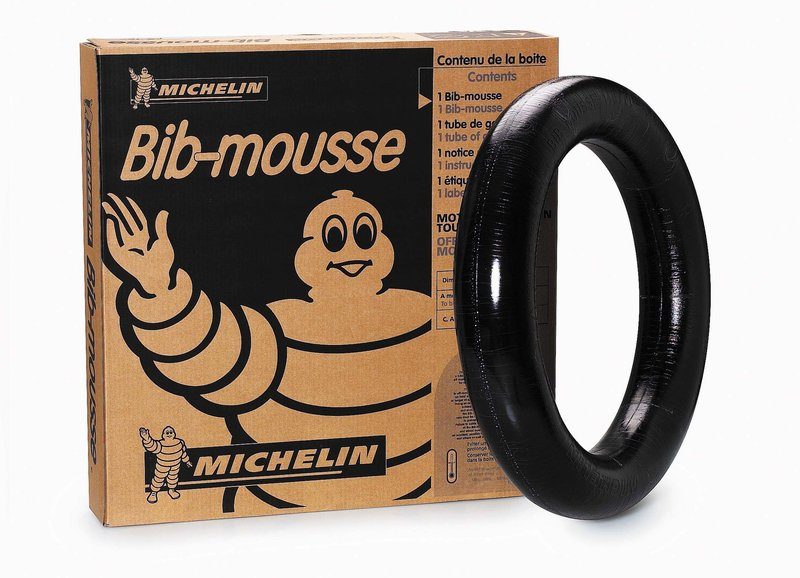Do you like mousse?
Most ADVers are familiar with the debate between tubeless tires, the TubLiss system, or good old-fashioned inner tubes … but how much do you know about running mousse inserts in your tires?
My knowledge is minimal, so I asked a few questions to Mike, owner ofTacoMoto.cowho is a rider and racer himself; his company sponsors many Baja riders and teams and also Dakar sensation Mason Klein.
***
rtwpaul: I guess I don’t know all that much about tire mousse systems. I know the Dakar, Africa rally and Baja guys use them for flat elimination, but I don’t know which ones I should try or how to install them, or history…any tips or background you’d like to share?
TacoMoto: Depending on the bike and the ride conditions a mousse may be a fantastic choice or a terrible nightmare for you. A mousse is a foam cell insert made of a butyl rubber honeycomb filled with nitrogen gas to control heat expansion. This fills the tire in place of air.

Photo:TacoMoto.co
This idea was originally developed in the early ’80s by Michelin for the Paris to Dakar Rally, to gain an advantage over the bikes running tubes, who continually suffered flats and delays.
The name ‘bib’ comes from the Michelin mascot and the French desert mousse because of its airy composition, so the name ‘bib mousse’ is like calling a tissue a ‘Kleenex’ regardless of who made it.
The enemy of a mousse is heat
The enemy of a mousse is heat, as it weakens the walls of the micro air cell pockets causing them to fail, blending them into ever larger and larger merged air chambers which could lead to a runaway failure of the density of the system and an eventual flat tire. To prevent this, an installer should thoroughly lube the mousse with silicone grease or thick silicone oil and the rider should avoid overheating the system when on the pavement by keeping speeds in the 40-55 mph range in the summer, and possibly 55-75 in the winter, occasionally stopping to check the rear tire temperature.
The higher the heat loading, the shorter the life, although the front tire is mostly immune to any temperature/heating issues.
While this may seem complicated and fussy, the benefits far outweigh the downsides with flat-free problem-free-riding across any terrain or condition.
How long do they last?
A typical rear mousse will last as long as one or two tires and a front for typically the same lifespan as a tire.
Are they heavier or lighter than a tube?
The rear weight is comparable to a Bridgestone ultra heavy duty tube at about 4.3lbs but the cost is a lot more and is typically in the $125-$140 (USD) range for most brands.

Photo:TacoMoto.co
Describe the ride/ feel?
The ride feel is neutral and rebound-free and may take a few times out to get used to, but once you become accustomed to it most will prefer it to air and will often never go back to a tube again. Densities will dictate ‘PSI’ equivalencies but most will be in the 8-15 psi range.
Who are they ideal for?
The ideal mousse rider is:
- Any racer who cannot afford the time penalty of a flat.
- Any rider who wants to ditch carrying spare tubes, air pumps, and tire changing tools.
- Any rider who understands these are a bit more complicated than a tube but are willing to accept that for the benefits of them over air.
- Any rider who wants to free himself from the worry of pinch flats, punctures, most rim damage, and the routine maintenance of air pressure checks.
Don’t consider mousse if:
- You primarily ride pavement or know you won’t keep speeds in check if you do.
- You don’t want to deal with their unique installation and operational practices.
- Your machine and rider weight is over 550 lb. We’ve found that to be about the ceiling for durability, unless you’re ok with shorter replacement cycles.
- 你的人有一个很好的记录tubes and air-based systems.
How about some mousse tips and tricks?
Murphy’s Soap or tire installation paste is a poor choice for long-term durability, as these are typically vegetable oil-based compounds that will dry out fairly quickly and shorten the potential life cycle of the mousse. If you plan on changing them often you’ll be fine, but if maximum durability is your goal, go silicone.
Unless you’re replacing a tire and mousse with a fresh one after every rally stage, a rim lock on the rear is mandatory and optional on the front.

Photo:TacoMoto.co
Some will run two rim locks on the rear; that’s a great idea, but tricky to install and not essential to get a good performance life cycle out of a rear. Spinning a tire on a rim with a flabby mousse is a real drag and running the lock saves the day every time.
To maximize the life of a mousse, it must be balanced. The rim lock will be a heavy spot and the constant pressure exerted on that specific heavy spot of the mousse will shorten its possible life span. Do this even if you only ride dirt.
If the bead doesn’t seat during installation, you can try a few speed runs to sort it out. if that doesn’t work, try injecting shop air into the empty valve stem hole to push the tire into the bead. A mousse too small to fill a tire should be avoided and can be plumped up with cut sections as needed or swapped for the next size up or run with the next size smaller tire.
How/ why do they fail?
The most common cause of mousse failure isn’t a failure with the mousse at all; it’s a tire failure caused by a botched installation. Tearing the bead cords ruins the tire and it’s just a matter of time before it comes off the rim.
一旦完成就完成了,对吗?
Yes and no. Keep your old mousse in a trash bag and slice them into usable fill sections to plump up a current mousse as needed to keep a usable fill rate and extend its service life.

Photo:TacoMoto.co
How tough are they to install?
While it’s very possible to install and remove a mousse with hand tools on the garage floor, if you plan on really getting into a long-term relationship with the mousse, invest in a Rabaconda machine or one of its clones.
This video will show you a great way to mount a mousse with little effort. There’s a good tip about the rim lock towards the end.
Lube the mousse and the tire, use a stiff bridled mechanics brake brush to completely ‘paint’ the inside of the tire with the lube, then with your hands spooge up the mousse with the goo. There’s no such thing as too much lube. We use two tubes in the rear and one in the front.
We source gallon jugs of SuperLube (PN 56501) brand 5000 cSt silicone oil and use that also as needed, which is as thick as cold honey.
Having run mousse on all our Baja 1000 race bikes and trail bikes now for nearly 10 years exclusively, and having had the benefit of trying pretty much every brand and system out there, we’ve never found one that performs as reliably and consistently as the Michelins using the tips and techniques described above. We know there are a lot of folks having a lot of good experiences with other brands and we hope that good experience continues for them.
Mousse aren’t for everyone. Compared to tubes they cost more, have a shorter life span, are heavier than a standard tube, and are more complicated to install and deal with. But for those whose riding conditions, riding style, and mechanical aptitude are a good match, they wouldn’t ride on anything else.







